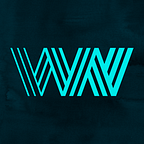The art of prioritisation for digital product development
When it comes to digital product development, there’s always one common theme: there will be more things to do than resources available to do them. This is true whether the product has already been created and we want to work out what to do next or whether the product is still at the initial discovery phase where we need to figure out an overall plan for how to deliver the product.
For the former ‘what should we build next?’ question, we’re focussing on the near term strategy, ideally aiming to deliver the next most valuable idea. For the latter product-wide plan, as well as having a good idea of the short-term, we need an outline for the product roadmap which includes a release plan and associated project milestones and costs.
Each of these scenarios requires our ability to prioritise the order in which we approach the work even if we need to use different techniques to achieve this outcome.
Below I’ve outlined a number of different techniques we use to help prioritise your project. Some of these techniques lend themselves to short term planning and others help to plan and prioritise on the roadmap level.
The MoSCoW method
The MoSCoW method is an activity that helps to reach a common understanding with stakeholders on the importance they place on the delivery of each requirement. It’s a fairly straightforward activity where individual requirements or outcomes are sorted into one of four piles:
- M: Must have
- S: Should have
- C: Could have
- W: Won’t have
Imapct vs effort matrix
With this technique, we review each feature/idea/requirement and place it within one of the four quadrants on a matrix (see below). It helps us to visualise ‘quick wins’: things that would be high impact with low effort (time/cost).
Marvel have written a useful article on this technique called ‘Tiny Wins’.
User story mapping
Not a prioritisation technique per-se but a technique that helps to visualise a product roadmap by defined outcomes. This in turn enables us plan releases based on the prioritisation of the outcomes within the roadmap.
You can read more from us about user story mapping here.
Impact mapping
Impact Mapping is a useful decision making tool that works well when trying to prioritise what to do next. It’s a goal-oriented technique focussing on uncovering ways of achieving the greatest impact for a specific goal.
I’ve previously written about this technique here.
Using forecasting to prioritise
It’s important to have an understanding of how much time it’s going to take to deliver planned capabilities because cost will impact priory. Therefore estimation is an essential part of project planning and prioritisation. We use forecasting techniques to convert the features and tasks defined in a user story map to forecast the time and subsequent cost of their delivery. We also use techniques such as Monte Carlo Simulation to provide a range of forecasts with an associated probability for each.
Using a burnup chart for project planning
Burn up charts can help to visualise the impact that increasing and decreasing scope has on the overall delivery schedule. Hence they help make decisions around what capabilities can be achieved in a certain timeframe which in turn enables prioritisation. We’ve created a digital product called Sprinter which we use to assess the impact that adding or removing features will have on the delivery schedule, helping us to decide if certain work can be added or indeed needs to be removed when working within specific scheduling constraints. I’ve written all about the benefits of burn up charts here.
